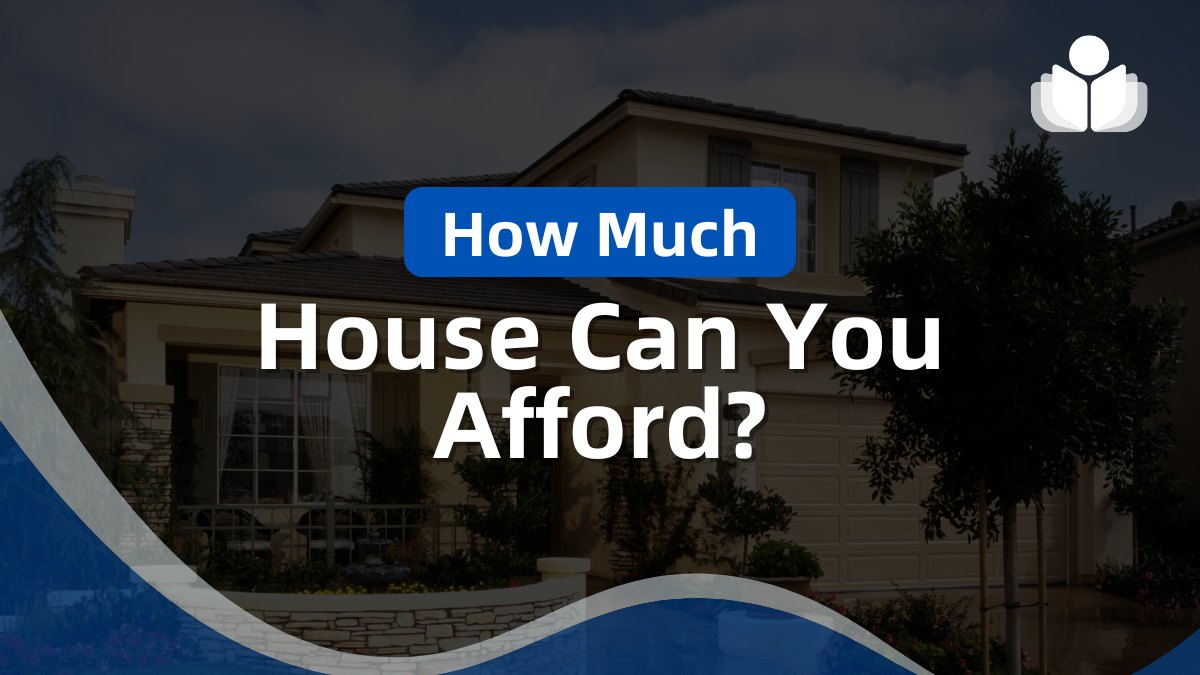Housing affordability revolves around a crucial question: “How much house can you afford?” This means understanding how much you can reasonably spend on a home without overextending yourself financially.
Factors such as your income, savings, existing debts, and overall financial situation will determine the size of the mortgage you can take on and what kind of home you can comfortably afford.
Understanding affordability is essential before embarking on the home-buying journey. Overextending yourself financially can lead to missed payments, stress, and long-term financial strain. A careful financial health assessment ensures you avoid these pitfalls and make a more informed decision about what you can realistically afford.
This article will provide a step-by-step guide to calculating home affordability. You’ll learn about the key factors that influence the house you can afford, how to use affordability calculators, and ways to improve your buying power. By the end, you’ll have a clear sense of what fits into your budget and lifestyle.
Factors That Determine How Much House You Can Afford
Several factors determine how much house you can afford, with your income and salary being the most significant. Lenders typically base your home affordability on a percentage of your gross income, including your primary salary and any additional income streams, such as bonuses or side gigs. A higher income increases your buying power, while limited income will cap the size of the mortgage you can secure.
Another critical factor is your Debt-To-Income ratio (DTI), which compares your monthly debt payments to your gross monthly income. Lenders prefer a low DTI, typically below 36%, meaning your total debt payments, including the new mortgage, shouldn’t exceed 36% of your gross income. The lower your existing debts (such as credit card payments, student loans, or car payments), the more houses you can afford.
The size of your down payment also affects affordability. A larger down payment, typically around 20%, reduces the size of the mortgage and lowers your monthly payments. On the other hand, a smaller down payment could increase your monthly costs and require Private Mortgage Insurance (PMI).
Interest rates play a significant role in determining affordability. Lower interest rates reduce the overall cost of the loan, allowing you to afford a more expensive home. Conversely, higher rates can shrink your buying power by increasing your monthly payments.
Your credit score directly impacts your loan terms. A higher credit score usually secures lower interest rates and better loan options, which boosts your home’s affordability.
Finally, you must account for other expenses like property taxes, homeowners insurance, and maintenance. These costs are part of homeownership and will affect how much house you can afford in the long term.
How to Calculate Home Affordability
A helpful guideline for calculating home affordability is the 28/36 rule. This rule suggests that only 28% of your gross monthly income should go toward housing costs (including mortgage, property taxes, and insurance).
Up to 36% of your income should cover total debt, including housing and other financial obligations like car loans and credit cards.
An affordability calculator can also give a clearer picture of what you can afford. These online tools factor in your income, debts, interest rates, and down payment to estimate a reasonable price range for your home. Using these calculators provides a more personalized estimate of affordability based on your unique financial situation.
To estimate your monthly mortgage payment, you can use this formula:
Mortgage Payment = P × r(1+r)n / (1 + r)n -1
Where P is the loan amount, r is the monthly interest rate, and n is the loan term in months (e.g., 360 months for a 30-year mortgage). This formula helps estimate your payment but be sure to include taxes, insurance, and maintenance when considering your overall monthly costs.
Remember to factor in other monthly expenses like utilities and repairs. Owning a home involves costs beyond the mortgage, so budgeting for these helps prevent financial surprises.
Consider the local cost of living. Housing prices vary dramatically between regions, so a home you can afford in a rural area may be out of reach in a city like San Francisco or New York. Adjust your expectations accordingly based on the cost of living in your desired area.
Types of Mortgages and How They Affect Affordability
Different types of mortgages can impact the house you can afford. Conventional loans are the most common type of mortgage and typically come in 15- and 30-year fixed-rate options. A 30-year mortgage has lower monthly payments, making homes more affordable in the short term. However, the total interest paid over the loan’s lifetime will be higher than a shorter-term loan.
FHA loans help first-time homebuyers with smaller down payments and lower credit scores. While FHA loans make homeownership more accessible, they come with mortgage insurance premiums, which can increase the overall cost of the loan.
VA and USDA loans offer favorable terms for veterans and rural homebuyers, including no down payment and lower interest rates. By reducing upfront costs, these loans can increase affordability for eligible buyers.
Adjustable-Rate Mortgages (ARMs) start with a lower interest rate that adjusts over time. While ARMs may offer affordability in the early years, they can become risky if rates rise, significantly increasing monthly payments.
Interest-only mortgages allow borrowers to pay just the interest for a set period, resulting in lower initial payments. However, after the interest-only period ends, monthly payments can increase sharply, creating affordability challenges in the long run.
How Your Lifestyle Impacts Home Affordability
Your lifestyle plays a crucial role in how much house you can afford. For instance, your current spending habits, like dining out, shopping, or traveling, can affect your savings potential and your ability to afford monthly mortgage payments. Small changes in spending habits can significantly impact your overall budget.
Consider your long-term financial goals. Are you saving for retirement, paying off debt, or planning to travel? Balancing homeownership with other financial priorities ensures you stay within your budget.
Family planning is another factor. If you plan to have children, you’ll likely face increased expenses such as daycare, education, and possibly the need for a larger home. Planning for these future costs is important when determining how much you can afford.
Even after purchasing a home, maintaining an emergency fund and savings is essential. Unexpected repairs and maintenance can be costly, and having an emergency fund ensures you’re prepared for any surprises that come with homeownership.
How to Improve Your Home Affordability
Consider increasing your income to afford a more expensive home. This can be achieved through various methods, such as seeking a promotion, taking on side gigs, or starting a small business. Additional income boosts your buying power and helps you quickly save for a down payment.
Another effective strategy is to pay off existing debts. Reducing high-interest credit card debt or loans will improve your Debt-To-Income (DTI) ratio, making you eligible for a larger mortgage. Paying down debt also frees up more of your monthly income for home-related expenses.
Improving your credit score is also crucial. Pay bills on time, reduce your credit card balances, and regularly review your credit report to dispute any errors. A higher credit score leads to better mortgage terms, such as lower interest rates, which increases your affordability.
Saving for a larger down payment can significantly reduce your loan amount, making homeownership more affordable. Cutting back on discretionary spending, setting clear savings goals, and automating savings transfers can help build up your down payment.
Shop around for better mortgage rates. Comparing offers from different lenders can lead to better interest rates and terms. Even a slight reduction in interest rates can significantly affect your monthly payments and overall home affordability.
The Risks of Overextending Yourself
Overextending yourself financially when buying a home can lead to living beyond your means. When much of your income goes toward mortgage payments, it can limit your ability to save, invest, or enjoy other aspects of life, such as vacations or dining out. Financial strain is a common consequence of buying more houses than you can afford.
Another risk is foreclosure. If you’re unable to make mortgage payments, you could default on your loan, which can lead to foreclosure. This means losing your home and severely damaging your credit score, making it difficult to secure future loans.
Hidden costs of homeownership, such as repairs, property taxes, and homeowners association (HOA) fees, are often underestimated. These additional expenses can stretch your budget further than expected, making your home less affordable over time.
Finally, overextending yourself can reduce your financial flexibility. A high mortgage payment limits your ability to handle emergencies, job loss, or unexpected life events. Even a small financial disruption can lead to significant stress and instability without a cushion.
Tools and Resources for Calculating Home Affordability
Online mortgage calculators are one of the best ways to determine home affordability. These tools let you input your income, down payment, debts, and interest rates to calculate a home price that fits your budget.
Budgeting apps such as Mint, YNAB (You Need A Budget), or Personal Capital can also help you track spending, save for a down payment, and manage finances efficiently during home-buying.
Consulting with a financial planner can provide personalized guidance on how buying a home fits your long-term financial goals. A financial advisor can help you determine how much house you can afford while balancing other priorities like retirement savings and debt repayment.
Getting pre-approved for a mortgage gives you a clear idea of the maximum loan amount a lender will offer. This pre-approval process helps you set realistic expectations and ensures you look at homes within your price range.
Conclusion
When considering home affordability, key factors such as income, debt, credit score, down payment, and interest rates all play a significant role. Carefully evaluating these elements ensures you make a financially sound decision when purchasing a home.
Homeownership is a significant milestone, but buying within your means is essential to avoid long-term financial strain. By following a structured approach, using tools and resources, and maintaining realistic expectations, you can enjoy the benefits of owning a home without unnecessary stress. Planning carefully today sets the foundation for a secure and comfortable future in your new home.
 Sections of this topic
Sections of this topic
















